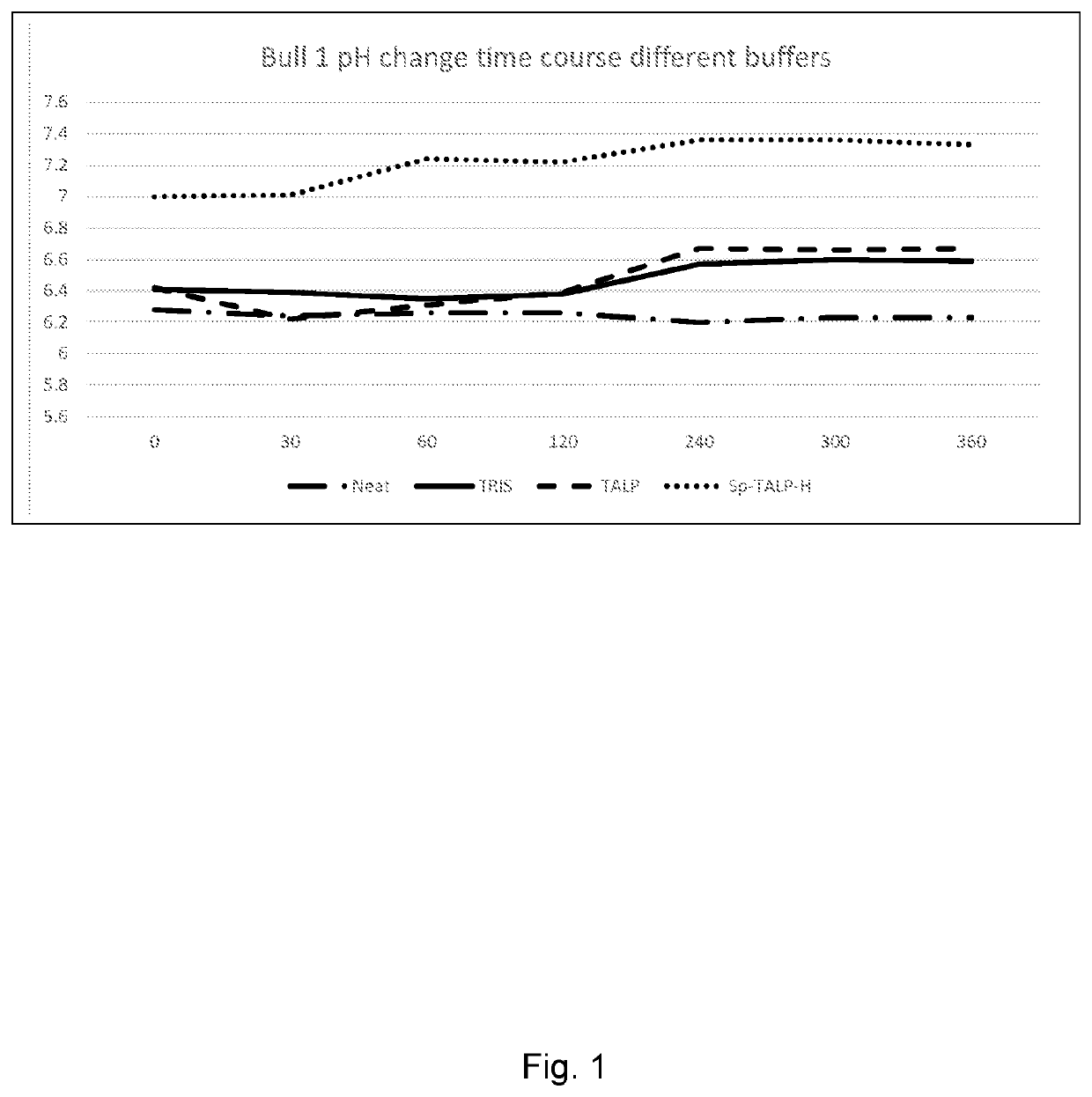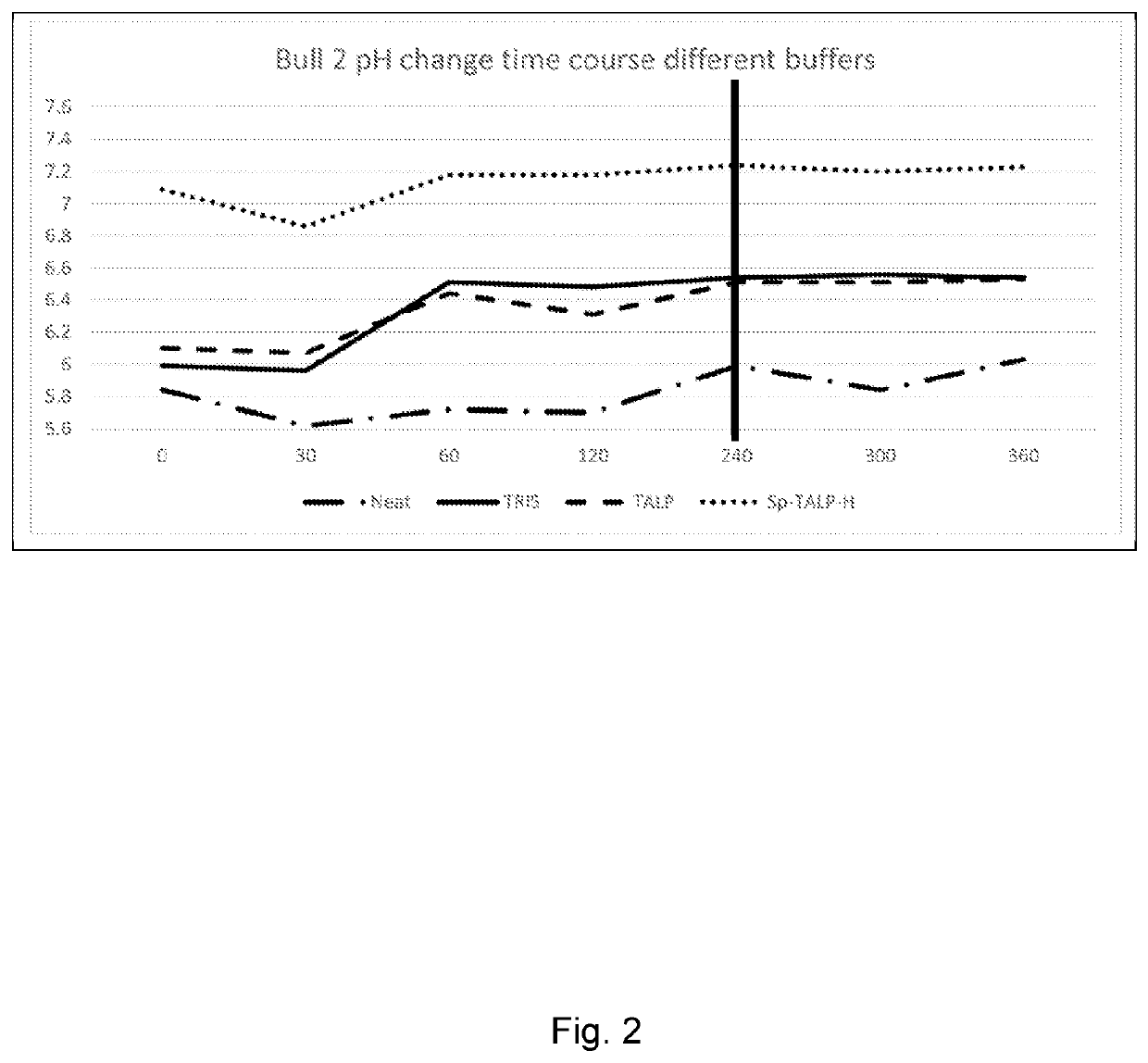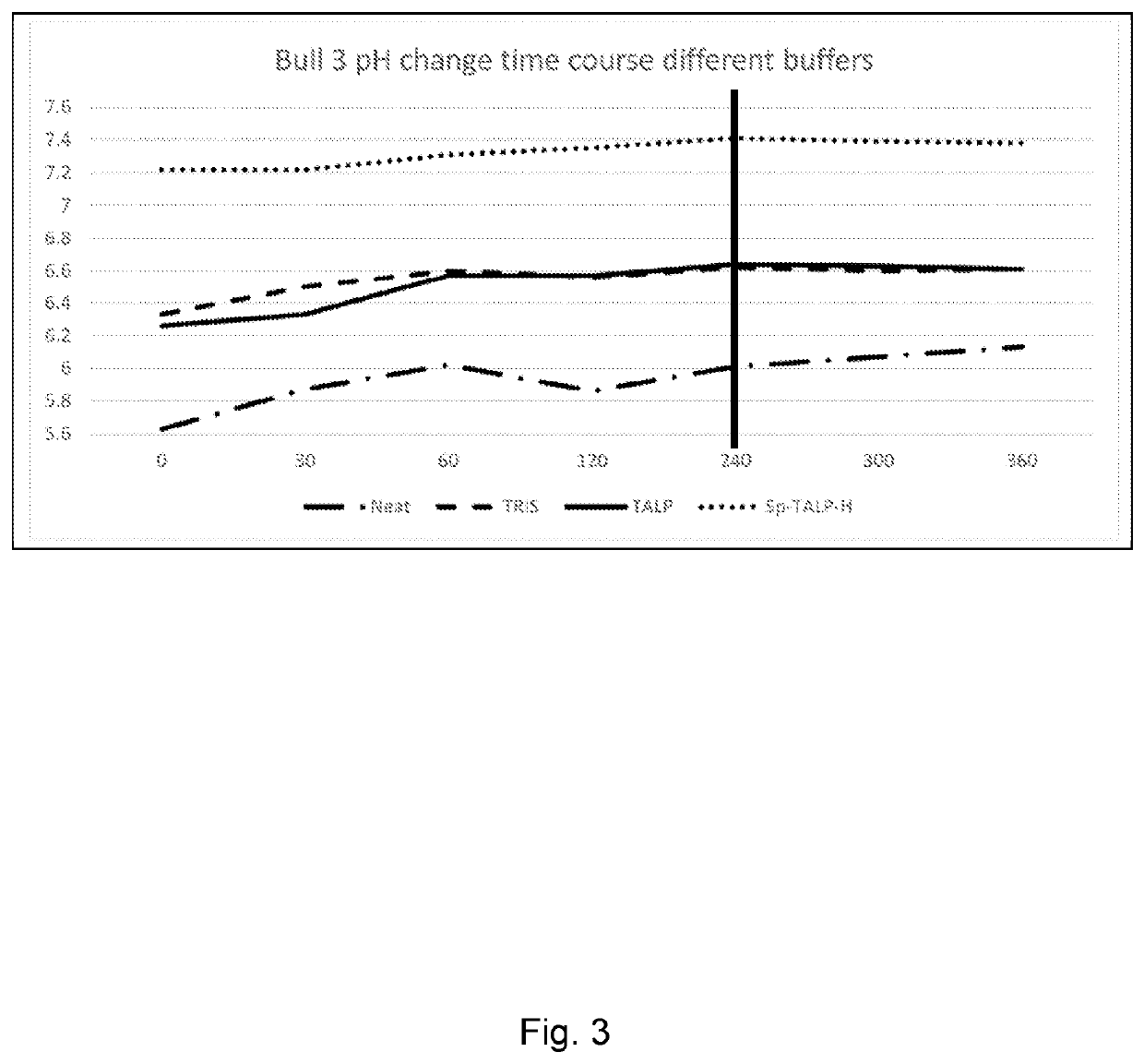Sexed Sperm Bulk Separation Systems
a separation system and sperm technology, applied in the field of sex selection of sperm, can solve the problems of inefficiency and time-consuming individual cell-based processes such as the flow cytometry sorting of sperm, and and achieve the only practicable way in which such results are achieved
- Summary
- Abstract
- Description
- Claims
- Application Information
AI Technical Summary
Benefits of technology
Problems solved by technology
Method used
Image
Examples
example 1
nt of pH of Fresh Semen in Different Buffers Over Time
[0057]This first example is disclosed to show the pH change in neat sperm over time at room temperature in various buffers with various pH's. As background, it should be understood that the ability to facilitate or induce capacitation is useful in some embodiments such as for magnetic removal of capacitated sperm. Naturally it should be understood that these examples are testing initial options only. As those of ordinary skill in the art should well understand, the pH variances and incubation times set for the sperm samples can be altered to suit particular applications and to create other embodiments that still fall within the scope of the present invention.
[0058]As part of this initial test, each of these ejaculates were either kept as neat semen (untouched), resuspended in TRIS 300WS buffer, resuspended in a clear TALP buffer, or resuspended in an Sp-TALP-H (heparin 10 ug / ml) buffer as but initial type of buffers that could be...
example 2
nt of pH of Pre-Purified X and Y Semen and Conventional Semen without Seminal Plasma in Buffers Over Time
[0085]This second example is disclosed to compare the pH change in X bearing and Y bearing sperm over time. The same buffers used in the first example were used (TRIS, Clear TALP, and the Sp-TALP-H). It shows the surprising and unanticipated differential that the two types of sperm achieve and lays a foundation for the invention whereby a difference that can be exploited and acted upon to achieve a sex related bulk separation can be created in some embodiments. As this example shows, Sp-TALP-H increased the percent capacitated Y sperm more than that of the X sperm with a heparin addition of 10 ug / ml. Naturally, other ranges of heparin concentration to induce capacitation as well as longer incubation periods to induce capacitation can be developed for each application. One goal of this experiment was to determine the cutoff time period and most effective heparin concentration to c...
example 3
nt of Pre-Purified Y Semen Capacitation Via pH in Differing Concentrations of Heparin in Sp-TALP-H Buffer Over Time
[0111]This third example is disclosed to compare the pH change in Y bearing sperm over time for differing concentrations of heparin. There are different medias that contain differing concentrations of heparin to induce capacitation. Varying concentrations of heparin were added to the Sp-TALP-H buffer and incubated with Y to determine higher or lower capacitation rates or amounts in the same amount of time. Three groups were analyzed, 4 million Y sperm each in: 1) Sp-TALP-H (5 ug / ml heparin), 2) Sp-TALP-H (10 ug / ml heparin), 3) SP-TALP-H (20 ug / ml heparin). The cells were then washed with the TRIS WS300 buffer. Each sperm pellet was resuspended in 4 ml of the buffer they were indicated. The pH and capacitation rate were measured over 6 hours as shown in Table 9 and FIG. 6.
[0112]As shown, it can be seen that by inducing capacitation such as with heparin or some otherwise ...
PUM
| Property | Measurement | Unit |
|---|---|---|
| pH | aaaaa | aaaaa |
| pH | aaaaa | aaaaa |
| concentration | aaaaa | aaaaa |
Abstract
Description
Claims
Application Information
 Login to View More
Login to View More - R&D
- Intellectual Property
- Life Sciences
- Materials
- Tech Scout
- Unparalleled Data Quality
- Higher Quality Content
- 60% Fewer Hallucinations
Browse by: Latest US Patents, China's latest patents, Technical Efficacy Thesaurus, Application Domain, Technology Topic, Popular Technical Reports.
© 2025 PatSnap. All rights reserved.Legal|Privacy policy|Modern Slavery Act Transparency Statement|Sitemap|About US| Contact US: help@patsnap.com



